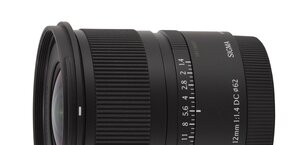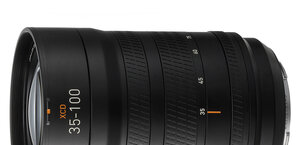Canon EF 24 mm f/1.4L II USM
3. Build quality
It is obvious that the Canon lens is the bulkiest and the heaviest in this group. It is surely influenced by the biggest number of elements and the USM motor. All these lenses’ filter threads are 77 mm in diameter and the Canon and the Nikkor boast the same minimum focus distance. The Sigma sticks out in a positive way here because its minimum focus starts from already 18 cm.
The photo below shows the Canon 24L, positioned between a Canon EF 28 mm f/1.8 USM and a Sigma 30 mm f/1.4 DG EX HSM.
Please Support UsIf you enjoy our reviews and articles, and you want us to continue our work please, support our website by donating through PayPal. The funds are going to be used for paying our editorial team, renting servers, and equipping our testing studio; only that way we will be able to continue providing you interesting content for free. |
- - - - - - - - - - - - - - - - - - - - - - - - - - - - - - - - - - - - - - - - - - - - - - - -
 |
The tested lens’s barrel is typical for short focal length L-series devices. It is black, with a characteristic red stripe, and made of magnesium alloys. The bayonet mount is of course metal and it surrounds quite big rear element (35 mm in diameter). On focusing to the minimum focus distance that element hides less than one centimeter inside the barrel. The front element doesn’t move which means that by setting the focus we change slightly the focal length of the lens (these 24 mm are available only when the light falls from infinity).
 |
On passing from the mount to the barrel we meet immediately the markings to identify focal length and, on the left side, the focus mechanism mode switch (AF/MF). Above these there’s a clear distance scale behind a window, expressed in feet and meters,. Below, we see depth of field markings for f/22, f/11 and f/4.0 aperture.
Next, there is a manual focus ring. It is wide (24 mm of width) rubberized and ribbed, ensuring very comfortable work. Running throughout the scale takes the turn of 160 degrees. This value is quite significant and it allows to set the needed parameters with utter precision especially that, at 24 mm, the depth of field can often be very deep so it forgives even considerable inaccuracy in our settings.
After the ring we find the full name of the lens and the aforementioned red stripe. Even further on we have the front element with a diameter of 54 mm, surrounded by a non-rotating 77 mm filter thread.
The lens consists of 13 elements in 10 groups. Two elements were made of low-dispersion UD glass which is supposes to guarantee an excellent chromatic aberration correction; two elements are aspherical (in the “glass mold” technology). All the air-to-glass surfaces are covered by high quality anti-reflection coatings and the inner part of the first element was coated by the newest layer of Subwavelength Structure Coating (SWC). Their task is to damp down any flares in an efficient way and to guarantee the lens proper work against bright light. Canon additionally boasts about using lead-free glass in all optical elements. Inside the lens you can find a circular aperture with eight diaphragm blades, which can be closed down to f/22.

The buyer gets both caps, a petal-type hood and a soft pouch included in box.
 |






